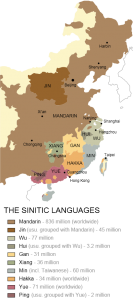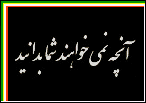آیا گویشوران زبانهای ایرانی چند قوم هستند؟
 As it was shown, the speakers of ancient Madi, Persian, Parthian, etc. languages always themselves “Aryans”(Iranian) Referred to. The current language of the Iranian branch of the Northwest ( The sample period is the middle Parsy ) And Southwest (The sample period is the middle of the Persian Sassanid) and these two languages were very close to each other.
As it was shown, the speakers of ancient Madi, Persian, Parthian, etc. languages always themselves “Aryans”(Iranian) Referred to. The current language of the Iranian branch of the Northwest ( The sample period is the middle Parsy ) And Southwest (The sample period is the middle of the Persian Sassanid) and these two languages were very close to each other.
If we look at some other groups, maybe the above question will be solved. The Chinese have different dialects and languages but from the same root. Languages like Cantonese- Mandarin-Taiwanese-Hui-Wu- Jin-Ping…All languages are Chinese(And despite having the same root, they are so similar to each other that the speaker of one Chinese language cannot understand it.) But they are all Chinese people. In China, there are other ethnic groups that are not part of the Chinese ethnic group, such as Mongols, Uighurs, and Tajiks (Hub) و غیره.
Also, in relation to Arab countries, this is enough, Moroccan Arabic is very different from Iraqi Arabic and is not understandable. But since Arabic languages have a common root, these people are also known as Arabs.
But in relation to Iranians, we return to this statement of Abu Rihan Biruni and Masoudi:
Abu al-Hasan Masoudi writes in al-Tanbiyyah and al-Ashraf:«پارسیان قومی بودند که قلمروشان دیار جبال بود از ماهات و غیره و آذربایجان تا مجاور ارمنیه و اران و بیلقان تا دربند که باب و ابواب است و ری و طبرستان و مسقط و شابران و گرگان و ابرشهر که نیشابور است و هرات و مرو و دیگر ولایتهای خراسان و سیستان و کرمان و فارس و اهواز با دیگر سرزمین عجمان که در وقت حاضر به این ولایتها پیوستهاست، همهٔ این ولایتها یک مملکت بود، پادشاهاش یکی بود و زباناش یکی بود، فقط در بعضی کلمات تفاوت داشتند، زیرا وقتی حروفی که زبان را بدان مینویسند یکی باشد، زبان یکی است وگر چه در چیزهای دیگر تفاوت داشته باشد، چون پهلوی و دری و آذری و دیگر زبانهای پارسی.»
Sequence read this post »











